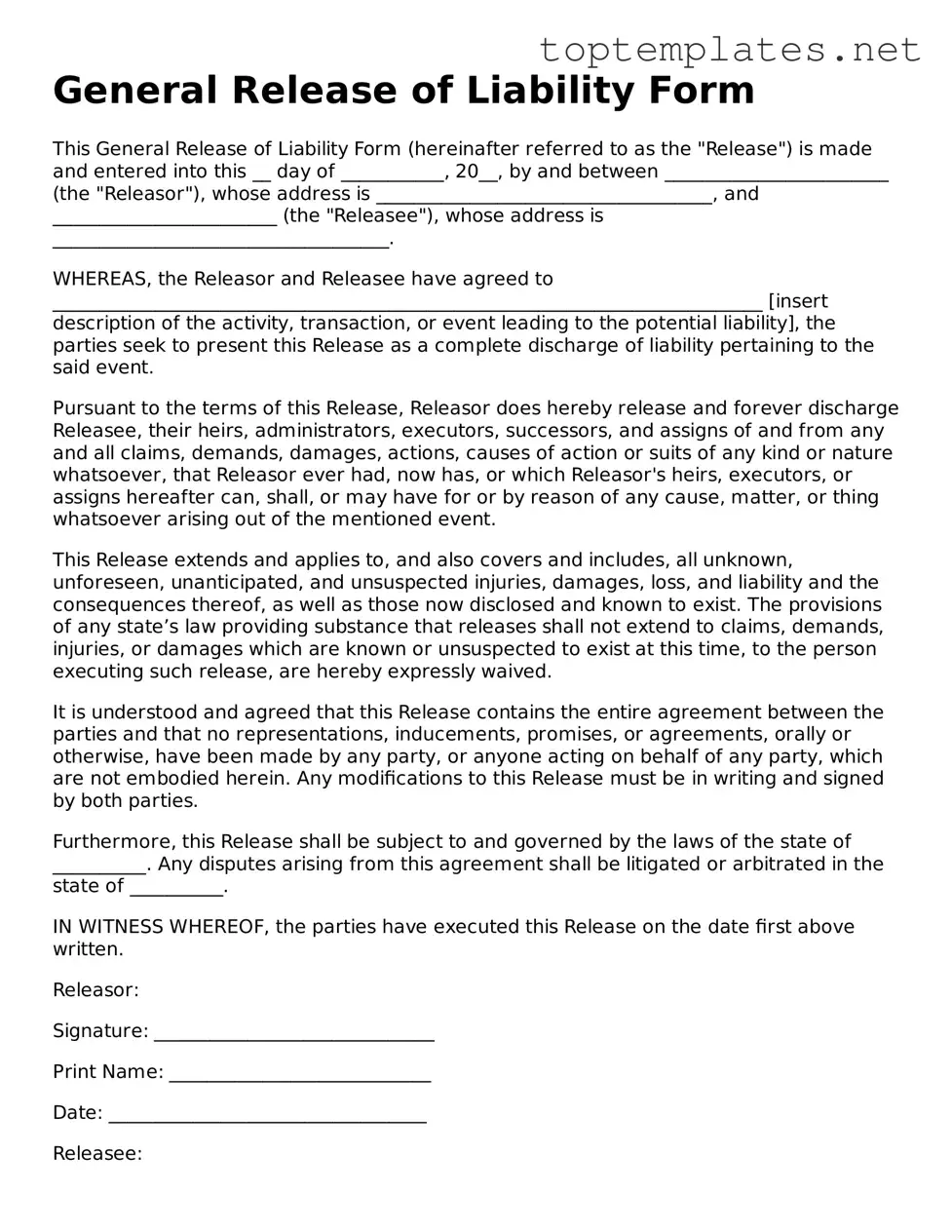General Release of Liability Form
This General Release of Liability Form (hereinafter referred to as the "Release") is made and entered into this __ day of ___________, 20__, by and between ________________________ (the "Releasor"), whose address is ____________________________________, and ________________________ (the "Releasee"), whose address is ____________________________________.
WHEREAS, the Releasor and Releasee have agreed to ____________________________________________________________________________ [insert description of the activity, transaction, or event leading to the potential liability], the parties seek to present this Release as a complete discharge of liability pertaining to the said event.
Pursuant to the terms of this Release, Releasor does hereby release and forever discharge Releasee, their heirs, administrators, executors, successors, and assigns of and from any and all claims, demands, damages, actions, causes of action or suits of any kind or nature whatsoever, that Releasor ever had, now has, or which Releasor's heirs, executors, or assigns hereafter can, shall, or may have for or by reason of any cause, matter, or thing whatsoever arising out of the mentioned event.
This Release extends and applies to, and also covers and includes, all unknown, unforeseen, unanticipated, and unsuspected injuries, damages, loss, and liability and the consequences thereof, as well as those now disclosed and known to exist. The provisions of any state’s law providing substance that releases shall not extend to claims, demands, injuries, or damages which are known or unsuspected to exist at this time, to the person executing such release, are hereby expressly waived.
It is understood and agreed that this Release contains the entire agreement between the parties and that no representations, inducements, promises, or agreements, orally or otherwise, have been made by any party, or anyone acting on behalf of any party, which are not embodied herein. Any modifications to this Release must be in writing and signed by both parties.
Furthermore, this Release shall be subject to and governed by the laws of the state of __________. Any disputes arising from this agreement shall be litigated or arbitrated in the state of __________.
IN WITNESS WHEREOF, the parties have executed this Release on the date first above written.
Releasor:
Signature: ______________________________
Print Name: ____________________________
Date: __________________________________
Releasee:
Signature: ______________________________
Print Name: ____________________________
Date: __________________________________
